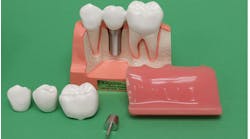Do you feel like you’re being held hostage by your team? Are you dreaming of sandy beaches just to escape difficult or disappointing employees? Partly due to the Great Resignation, many dentists believe they are stuck with underperforming team members. The thinking seems to be that any staff, even if they drive you crazy, is better than no staff.
But is this really an either/or situation? Just like Dorothy and her red shoes, you can free yourself. The question is, how do you work with the team you have now to develop them into the team you really want?
The most frustrating employee traits
My clients share that the employee behavior they find the most frustrating is inconsistent performance. You give feedback to an underperforming employee. The employee nods and agrees to change, and does change for a while, but then, within a few weeks, regresses back to the original behavior.
This is quite common because we generally find it hard to change ingrained habits, even when those behaviors don’t get us great results. But when you’re the boss, having team members who need continual prodding, poking, and follow-up can make you so insane that early retirement is seductive.
Also by Sharyn Weiss:
Talking fees with your patients: Why it's your job (or should be)
Stern dentist or concerned friend?
The carrot-and-stick approach
When you have an employee who isn’t doing what you want them to, you may have tried some version of the carrot-and-stick approach. You offer a reward (verbal or monetary) for every time the employee engages in the new behavior, or you deliver a punishment when they regress (such as a disciplinary letter). The carrot-and-stick model is widely accepted as the best way to motivate employees. But there are problems with it.
First, do you know where this term originated? It’s the method used by donkey owners to get their donkeys to move. Just think about that for a second. You want your highly paid, highly educated hygienist to change her verbiage with patients by either giving her the human equivalent of a carrot or by disciplining her with an acceptable version of a stick across her back. The carrot-and-stick approach doesn’t make long-term behavior remain because it is so reliant on your rewarding or punishing the employee. This method reinforces the message that employees will change only when you act as the enforcer or giver of goodies.
Regardless of how frustrated you may be, I hope you agree that your employees are not animals and that treating them like you would a stubborn donkey is insulting and ultimately ineffective.
The maternal/paternal approach
Another mistake I see dentists make is to view their employees like annoying teenagers and nag them into better behavior. If you find yourself saying things like, “Didn’t I tell you to do this last week?” or “How come the other assistant can do this and you can’t?” or “I’m sick of having to remind you,” then you are not communicating on an adult-to-adult level. If that’s your approach, it shouldn’t be a big surprise when your employees respond like teenagers and tune you out.
The CPR model
So, what can you do? There has got to be a way to address employee behavior in a way that’s respectful, effective, and appropriate for the workplace. I love the CPR method of giving feedback as described in the book Crucial Accountability. This method enables you to use adult-to-adult communication, share the impact of the behavior, and describe the consequences of continual noncompliance.
- The first time something happens, you talk about the content of what happened. “Esmeralda, I’ve noticed that you haven’t preblocked our team meetings into the schedule. These meetings are important because they enable us to have conversations that will improve the practice. They are nonnegotiable. When will you be able to reserve those times?”
- If the behavior recurs, talk about the pattern.
“Esmeralda, a few weeks ago we talked about the importance of reserving meeting times. I see that we have patients scheduled into this month’s meeting. I’m noticing a pattern in your performance. When I ask you to do something, it isn’t being done consistently. What do you believe is getting in the way of being consistent? What are you willing to commit to so you can be more consistent and reliable?”
- If the behavior still doesn’t change, share how this is affecting your relationship with the employee.
“This situation is putting a strain on our practice. The pattern of breaking your agreements with me has affected my level of trust with you. This is not the relationship I want for us. We need to talk about the kind of working relationship you and I want to have.”
Accountability and ownership
The key reason that neither the carrot-and-stick nor maternal/paternal methods work is that they don’t ask the employee to take accountability for their actions or to take ownership of the problem. You are working with adults, not kids or donkeys, so your chief focus shouldn’t be on getting obedience but on getting ownership. When employees truly own a situation and feel accountable for their results, they are internally motivated to change. You don’t need to bribe, punish, or threaten.
How do you inspire your employees to change? Here are several ways to communicate that are designed to ignite the employee’s internal motivation.
Technique:
Link the situation to the employee’s values or self-image. Employees are motivated to change when the new behavior aligns with their personal values or the way they want to see themselves.
How it should sound:
“Esmeralda, you present yourself as someone who is responsible and trustworthy, and that is why you have such a pivotal role at the front desk. I am counting on you to protect our practice by reserving these meeting times.”
Technique:
Focus on long-term benefits vs. short-term gains. Many well-meaning employees don’t implement policies because they don’t like disappointing patients. Show the employee that this behavior actually hurts the practice in the long run.
How it should sound:
“Esmeralda, I appreciate how concerned you are that patients get help as quickly as possible, and I recognize that is why you have been scheduling them into our meeting times. But I’m wondering if you’ve thought about how this damages us in the long run. What do you see as the consequences in continuing to do this?"
Technique:
Show the consequences to their relationships. Employees usually do care about how they are perceived, and they want to be liked and respected by their colleagues. Share how the employee’s behavior undercuts their reputation or hurts their coworkers.
How it should sound:
“Esmeralda, I’m wondering if you’ve considered how your colleagues feel about patients being scheduled into our lunch and meeting times. I see them looking stressed and frustrated by these last-minute additions. So, while your intention is to help the patient, this behavior is hurting your colleagues. How do you feel about this? How do you think they perceive you when you do this?”
Technique:
Describe the benefits of the desired behavior. Link the new behavior to something the employee values.
How it should sound:
“Esmeralda, I know you would like to be promoted to an office manager position. Preserving our meeting time is one way to show me that you are ready for that responsibility.”
Note that this type of communication is respectful and direct. Instead of pressuring the employee to change to appease you, the focus is on helping the employee see how their behaviors and decisions affect themselves and their colleagues. Employees get to make their own decisions about whether they want those consequences.
Remember that change can be hard. Your employee may sincerely want to change but may need additional training, support, or resources to do so effectively. That is why conversations about performance need to be dialogues rather than monologues. I’ve compiled a series of articles about how to communicate with your team that I’m happy to share; email me at [email protected] and I’ll send those additional resources.
Editor's note: This article appeared in the March 2023 print edition of Dental Economics magazine. Dentists in North America are eligible for a complimentary print subscription. Sign up here.






